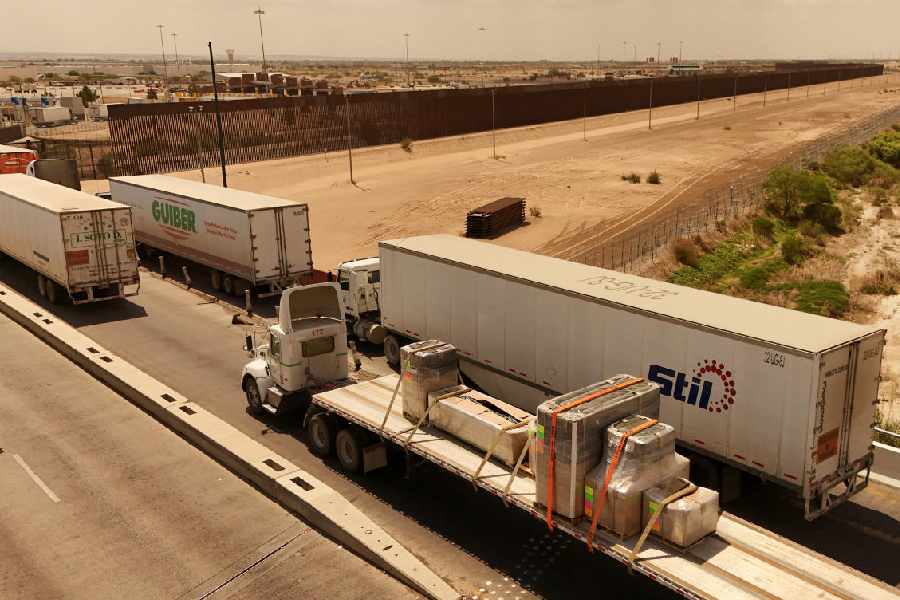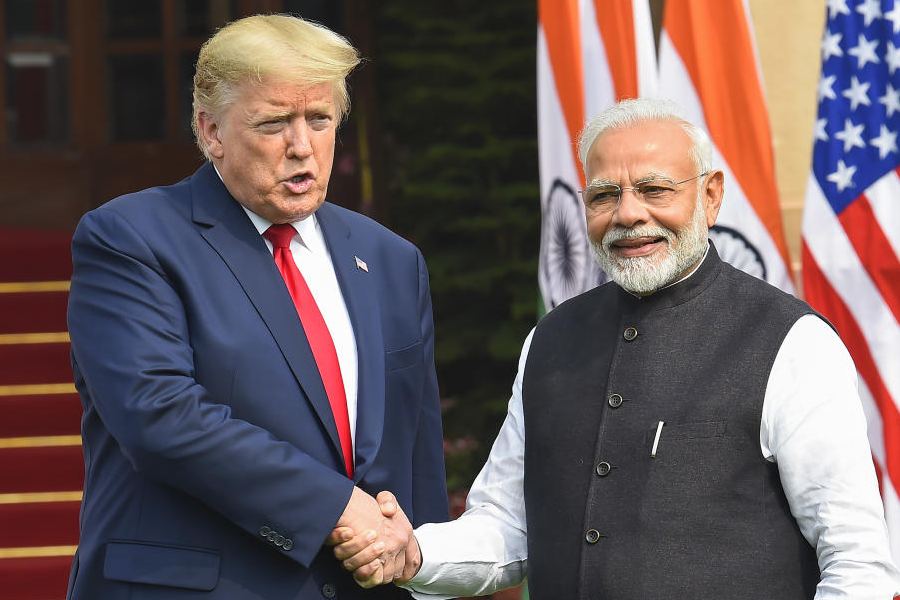Trade chaos is forcing America’s allies closer together, and further from the US. And as that happens, the European Union is trying to position itself at the centre of a new global trade map.
The 27-nation bloc learned this weekend that US will subject it to 30 per cent tariffs starting August 1. Ursula von der Leyen, the president of the EU executive branch, responded with a pledge to keep negotiating, and to retaliate if necessary.
But that was not the entire strategy. Europe, like many of the US’s trading partners, is also looking for more reliable friends.
“Meanwhile, we continue to deepen our global partnerships, firmly anchored in the principles of rules-based international trade,” von der Leyen said.
She will make good on that starting on Sunday. Von der Leyen is scheduled to give a speech alongside Indonesia’s President. Just as Trump threatens to put hefty tariffs on the Asian nation, the EU is working to relax trade barriers.
It is a split screen that is becoming typical. On one side, the US sows uncertainty as it blows up weeks of painstaking negotiations and escalates tariff threats. On the other, the EU and other American trading partners are forging closer ties, laying the groundwork for a global trading system that revolves less and less around an increasingly fickle US.
“Free and fair trade drives prosperity, creates jobs and strengthens supply chains,” António Costa, the president of the European Council, wrote on social media on Saturday. The council brings together the heads of state and government from across the bloc. “We will continue to build strong trade partnerships worldwide.”
It will be hard to move away from the US because it is the world’s largest economy, home to a bustling consumer market and cutting-edge technologies and services.
But many American trading partners feel that they are left with little choice but to diversify. And while trade relationships are difficult to alter, they are also difficult to change back once they have been totally reorganised.
EU negotiators had engaged in months of back-and-forth with their US counterparts in the run-up to President Donald Trump’s announcement. And up until the middle of the week, Brussels hoped that it was closing in on at least the framework for a deal: The EU would accept a base tariff of 10 per cent, but it would also push for carve-outs for key sectors.
Instead, Trump began hinting on Thursday that the bloc — one of America’s most important trading partners — would receive a letter setting out a sweeping, across-the-board tariff rate.
The White House officially notified EU officials on Friday that their carefully drawn plans had blown up. And on Saturday, the public learned from Trump’s social media account that the bloc would be subject to a 30 per cent rate.
Trump simultaneously announced that he would place a similar tariff on goods from Mexico. Canada’s rate is slightly higher, at 35 per cent. And from Thailand (35 per cent) and Bangladesh (35 per cent) to Brazil (50 per cent), dozens of US trading partners appear to be headed for a similar fate.
Trump has backed down from threatened tariffs before, and he has indicated a willingness to negotiate these tariffs down before their August 1 effective date — and the EU and other economies are poised to continue with negotiations. But the vibes are increasingly hostile.
Trump is “instrumentalising uncertainty” to try to force America’s trading partners to make concessions, said Mujtaba Rahman, the managing director for Europe at the Eurasia group, calling the latest announcements a “complete move of the goal posts”.
Trump’s announcement on Saturday sharply intensified calls in Europe for immediate retaliation.
The bloc has already created a retaliatory package, one that will kick in early Tuesday morning unless EU policymakers suspend it.
Trade officials are coming under pressure to respond to Trump with a show of strength. Brando Benifei, who heads the delegation for relations with the US at the European Parliament, urged the EU’s executive branch to allow the retaliation to take effect — and to draw up plans for an even more aggressive response by August 1. “Trump is trying to divide and scare Europe,” he said.
European Union ambassadors will meet in Brussels on Sunday afternoon to discuss what to do on trade, an EU diplomat said.
But hitting back is just a first step; drawing closer to outside allies may prove even more meaningful in the long run. Since Trump’s push to reorder the trading system kicked off in February, the EU has been hustling to strike new trade agreements and deepen existing ones.
Canada and the EU have pulled together. Britain and the EU had a rapprochement five years after Britain officially exited the union. The bloc is working toward closer trading relationships with India and South Africa, and with countries across South America and Asia. Nor is the EU the only global power adopting such a strategy. Canada is also drawing closer to Southeast Asia, while Brazil and Mexico are working to deepen their ties.
Officials have even floated the idea of building trading structures that exclude the US and China, which is widely blamed for supporting its factories to the point that they overproduce and flood global markets with cheap goods.
Von der Leyen recently suggested that Europe could pursue a new collaboration between the bloc and a trading group of 11 countries that includes Japan, Vietnam and Australia, but that notably did not include the US or China.
Closer ties between Europe and Indonesia could help both sides blunt the effect of the US’s pullback.
Airlangga Hartarto, the Indonesian minister for economic affairs, said in an interview on Thursday in Washington that while he hoped to reach a deal to defuse American tariffs, his country was diversifying its relationships in case tariffs remained.
One key question, analysts said, is whether America’s allies will go a step further. Instead of simply collaborating more with one another and leaving the US out, could they actually gang up to counter the US?
New York Times News Service











